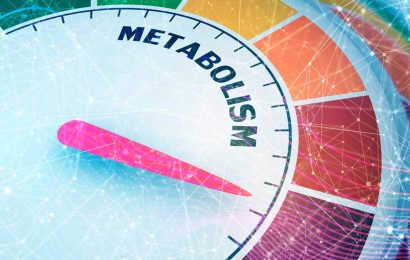How to limit your BPA exposure
When people think about the causes of diabetes, they usually include factors like genes, diet, and exercise habits. Environmental chemicals are rarely mentioned. But new research finds that bisphenol A (BPA), a chemical widely used in plastic and aluminum packages, cans, and bottles, is strongly associated with higher chances of developing type 2 diabetes. And anything that increases the risk of developing type 2 diabetes may perhaps also make existing cases worse.
BPA is a chemical found in certain plastics and has been associated with a variety of health issues. Another group of substances of concern is PFAS, or per- and polyfluoroalkyl substances. According to the Centers for Disease Control and Prevention (CDC), PFAS are found in a wide range of consumer products that resist heat, oil, stains, grease, and water, including some made with plastic. Due to their extensive use and persistence, PFAS are widespread in the environment.
According to WebMD, “BPA is used in the hard, clear plastic of food containers and water bottles. BPA is also used in a material called epoxy resin, which lines the inside of some metal food and drink cans. You may also find it in some medical devices, dental sealants, and compact discs.
PFAS are sometimes called “forever chemicals” because they never break down in nature. Over decades of PFAS use, our waterways and our bodies are gradually filling up with them. Studies show that more than 90% of Americans have BPA in their blood.
To get cutting-edge diabetes news, strategies for blood glucose management, nutrition tips, healthy recipes, and more delivered straight to your inbox, sign up for our free newsletters!
But are BPA and PFAS really bad for us? Can they increase the risk for diabetes? Studies indicate they can.
For years, a series of studies have shown a link between high levels of BPA and infertility, diabetes, obesity, heart disease, and high blood pressure in rodents. Mice aren’t people, but a study published in the Journal of Clinical Endocrinology & Metabolism in 2021 found that higher levels of BPA were associated with an increased risk of type 2 diabetes in American adults.
People with high BPA had 1.68 times more diabetes than those with less. The effect was stronger in women than in men.
A study from 2021 found that Mexican adults with higher levels of BPA had increased risk of type 2. Like the American study, the Mexican researchers found that the relationship between BPA exposure and type 2 diabetes was stronger in women.
We know that association does not prove causation. Maybe the high BPA and diabetes are both caused by something else, like poverty perhaps. How could BPA actually cause diabetes?
The gender differences point to a hormonal cause, and PFAS are often called “endocrine disruptors” because they interfere with hormone function. According to the website Diabetes In Control , “BPA has been shown to interfere with the production and function of hormones, including insulin … This interference may lead to insulin resistance and an increased risk of type 2 diabetes.
There are other possible connections. High levels of BPA were found in an American study to greatly increase the risk of obesity in U.S. children and adolescents. The connection was significant even when controlling for other risk factors, such as diet and physical activity.
Other PFAS have been found to cause inflammation in people who consume them. Diabetes is an inflammatory disease, so quite possibly BPA could help cause diabetes through inflammation.
How to avoid BPA
I wouldn’t throw away food just because it came in a plastic container, but if you want to minimize your exposure to BPA, you can take actions such as these:
Don’t microwave plastic food containers.
Heat can make them break down over time and release BPA. If you keep food in plastic containers or buy it that way, move it into a nonplastic bowl before heating.
Find plastic that doesn’t have BPA.
Avoid hard, clear plastic items, which are likely high in BPA. These can often be identified by the recycling code “7” in the little triangle on the bottom of the package. The numerical codes are generally useless for recycling, but the code will tell you if the container likely contains BPA. Those with a 3 or 7 often (but not always) have BPA in them. Those with a 1, 2, 4 or 5 usually don’t.
Reduce your use of canned foods and all packaged food.
Most aluminum and tin food cans have BPA in the lining. This is true of aluminum and tin cans, because BPA is used to prevent spoilage of food and rusting of the containers. Some of it inevitably gets into the food.
Use glass or porcelain containers, especially for hot food or liquids.
Even BPA-free containers may have chemicals we don’t want in our bodies.
BPA is not going away
Like other toxic chemicals, BPA does a lot of good things. It keeps food from spoiling; it keeps cans and bottles from breaking down. This is why it has become a $20 billion business.
BPA and its PFAS cousins are used in many industrial applications . Much of the world’s thousands of miles of cable and tubing are lined with PFAS to prolong their useful life. Computers are full of them. These chemicals are not going away. Since they never break down, they will continue to build up in water and air.
We can limit our exposure and advocate for restrictions on these chemicals. The Biden administration recently proposed the first ever standards for how much BPA can be in drinking water, so that’s a start. The EPA has restricted the use of BPA in baby bottles, sippy cups, and infant formula packaging.
Remember, BPA is just one of dozens of chemicals associated with diabetes. Researcher Sarah Howard, MS, who has diabetes herself, has a website called Diabetes and the Environment that lists many of the chemicals known to contribute to type 1 diabetes. A lot of the information seems relevant to type 2 as well. The site provides regular updates on these issues.
Want to learn more about chemicals and diabetes? Read “Are Endocrine Disruptors Disrupting Your Life? “Endocrine-Disrupting Chemicals Common In Fast Food Items, “Report Calls for Action to Reduce Impact of Endocrine-Disrupting Chemicals, and “PFAS Chemical Exposure Linked to Diabetes Risk.”
Living with type 2 diabetes? Check out our free type 2 e-course!





